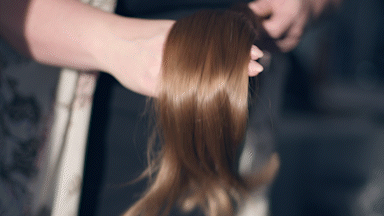Why Some ‘European Hair’ Wigs Don’t Live Up to the Promise

You’ve heard that European human hair wigs are the best of the best, luxurious, soft, and natural-looking. But for many women, the reality doesn’t match the hype. You invest thousands into a wig labeled “European hair,” only to find that it tangles easily, lacks softness, or just doesn’t wear the way you expected.
If this sounds familiar, the truth is, not all wigs marketed as “European hair” actually contain genuine European human hair, and in an unregulated industry, it’s all too easy to be misled. This article breaks down why some wigs fall short, what’s really going on behind the label, and how you can protect yourself as a buyer.
Why European Human Hair Wigs Are So Highly Valued

European human hair is prized in the wig-making world for a few key reasons:
- Texture: It’s typically finer and silkier than other types of human hair, resembling the natural hair texture of many women of European descent.
- Scarcity: Authentic European ponytail hair is hard to source these days. Countries like Russia, Ukraine, and parts of Eastern Europe supplied the most European human hair in the past, but demand far outweighs availability, especially these days.
It’s important to note: this isn’t about one type of hair being “better” than another. Hair from all ethnicities has value and beautiful natural qualities, and preference usually comes down to what matches a person’s natural hair. For those used to having fine, smooth hair, European strands offer the most natural look and feel.
Why ‘European Hair’ Wig Labels Can Be Misleading
Despite its luxury status, there are no industry standards or regulations governing the use of the term “European hair.”
That means:
- Any brand can label their wigs as “European hair” without proving the origin.
- Hair may come from completely different regions, often Indian or Chinese, and be processed to mimic the look and feel of European strands.
- Misleading terms like “European quality,” “Euro blend,” or “European texture” are commonly used, without any real substance behind them.
Because of this lack of oversight, what you're promised and what you're actually wearing may be two very different things.
When European Hair Wigs Fall Short
Many buyers assume that a higher price tag guarantees authenticity and quality. Unfortunately, that’s not always the case.
Common issues include:
- Dryness and tangling: Heavily processed hair, especially when it’s not truly European, tends to degrade more quickly.
- Silicone-coated strands: These make the wig feel soft at first, but once the coating washes away, the hair becomes dull and rough.
- Mismatched texture: Some wigs marketed as European may feel coarse or heavy, failing to match finer bio hair.
The result? A wig that doesn’t live up to your expectations and a lot of frustration about where your money went.
How to Tell if a Wig Is Made With Real European Human Hair
If you’re shopping for a wig made with genuine European hair, here’s what to look for:
- Sourcing transparency: Reputable brands will share details about where their hair comes from and how it’s collected.
- Terminology clarity: Be wary of vague labels like “Euro texture.” Look for specificity: Is the hair actually from Europe? Was it collected as ponytails? Is it unprocessed or minimally treated?
- Customer reviews and brand reputation: Real feedback from real people will often reveal whether a wig performs well over time.
What the Best Wig Brands Do Differently with European Human Hair
Premium human hair wig manufacturers who work with authentic European strands often take extra care throughout the production process. This includes:
- Ethically sourcing ponytail hair from trusted regions
- Avoiding excessive chemical processing
- Using hand-tied construction for a more natural movement and appearance
- Offering consultations to set realistic expectations and guide customers to the right match
These brands may charge more but the value is in the hair’s longevity, realism, and comfort.
Is Your Wig Really European Hair and Does It Matter?
If you’ve been disappointed by a so-called European hair wig, it’s not your fault. In a marketplace filled with bold claims and limited regulation, it’s easy to be misled. But knowledge is power.
Understanding the difference between true European human hair and marketing spin helps you make smarter, more informed decisions so you can invest in a wig that truly delivers on its promise.
Many customers who have tried premium brands, like Follea, speak openly about the difference in quality, texture, and wearability. Their stories may help guide your next choice and restore your confidence in what a truly great wig can feel like.
If you're curious to see what goes into creating these premium pieces, explore our behind-the-scenes factory videos. You'll get a firsthand look at how we carefully process genuine European human hair and handcraft each wig with precision and care, because when it comes to quality, seeing really is believing.

.jpeg)

